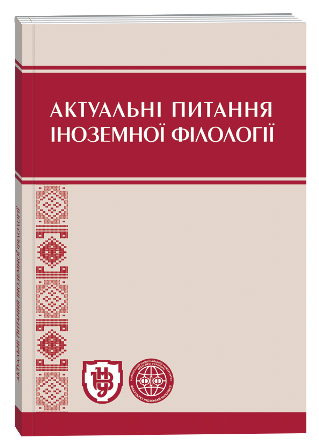MULTIMODALITY IN DESCRIPTIVE ELEMENTS WITHIN MODERN ENGLISH-LANGUAGE SNACK FOOD PRODUCT NAMES
DOI:
https://doi.org/10.32782/2410-0927-2024-20-5Keywords:
multimodality, construction, grapheme, verbal, non-verbal, meansAbstract
This article is devoted to the study of modern English-language food names in terms of what they illustrate for the purposes of research into multimodal vectors. On the basis of the corpus of illustrative material which was selected, it is evident that modern content producers use a wide range of non-verbal and paraverbal units, as well as traditional verbal devices. In this paper, it is demonstrated that non-verbal and paraverbal components are actually full-fledged elements which, in particular, can replace the graphemes ‘e, i, o’ or be integrated into structures which include them. Evidence is presented to substantiate the assertion that non-verbal means are not inferior to their verbal equivalents, but, on the contrary, facilitate much more rapid perception and, consequently, memorization, due to the manner in which they enhance the content of the message. It is confirmed that the multimodal lexemes and syntactic constructions presented here are variable in terms of their quantitative content and creation. The process of replacing graphemes or their parts involves components which are part of the product or which related to some distinctive features of the brand which is being advertised. The point is advanced that, unlike the case of traditional verbal lexemes, established rules have not yet been formulated for multimodal ones, on the basis of which they are to be created, encrypted and decrypted. In contrast to the existence of conventional strategies for constructing classical English lexemes, multimodal lexemes provide the options of an arbitrary structure and unlimited quantitative composition. In this paper various combinations that amalgamate verbal and non-verbal means simultaneously are presented. It is emphasised that modifications of traditional lexemes occur both with single and with multiple units, as well as with the complete lexemes simultaneously. It has been discovered that the selection of elements to be replaced by means of these non-verbal components is based on the concepts and goals of the companies which market the products in question. By virtue of the typographical options for positioning the components of the advertised food products, content creators are able to emphasise elements which are integral to the manufacturing process or which appeal to the popular trend of the twenty-first century – healthy eating. In some cases, when advertising popular foods that might be considered to fall within the category of junk food, the focus is on showing care for potential consumers by improving flavour, or by reducing the fat and calorie content.
References
Лиса Н. С. Англійські рекламні знаки: особливості мовної реалізації. Іноземна філологія. 2001. Вип. 112. С. 127–133.
Макарук Л. Л. Мультимодальність сучасного англомовного масмедійного комунікативного простору : дис. докт. філол. наук: спец. 10.02.04; Запорізький національний університет. Луцьк, Запоріжжя, 2019. 635 с.
Макарук Л. Л. Засоби та прийоми лінгвальної гри у сучасній англійській мові. Наукові записки. Серія “Філологічні науки” (Ніжинський державний університет імені Миколи Гоголя) / відп. ред. проф. Г. В. Самойленко. Ніжин: НДУ ім. М. Гоголя, 2014. Кн. 1. С. 142–148.
Макарук Л. Л. Невербальні та паралінгвальні семіотичні ресурси у лінгвістичних студіях ХХ-ХХІ століть: прикладний аспект. Закарпатські філологічні студії: зб. наук. праць. Ужгородський національний університет. Ужгород, 2018. № 5. С. 66–72.
Cook G. The Discourse of Advertising. 2nd ed. London : Routledge, 2001. 256 р.
Keiko T. Advertising Language. A Pragmatic Approach to Advertisements in Britain@Japan; London@New York. Printed@bound in Great Britain by T. J. International Ltd. Padstow; Cornwall, 1999. 148 p.







